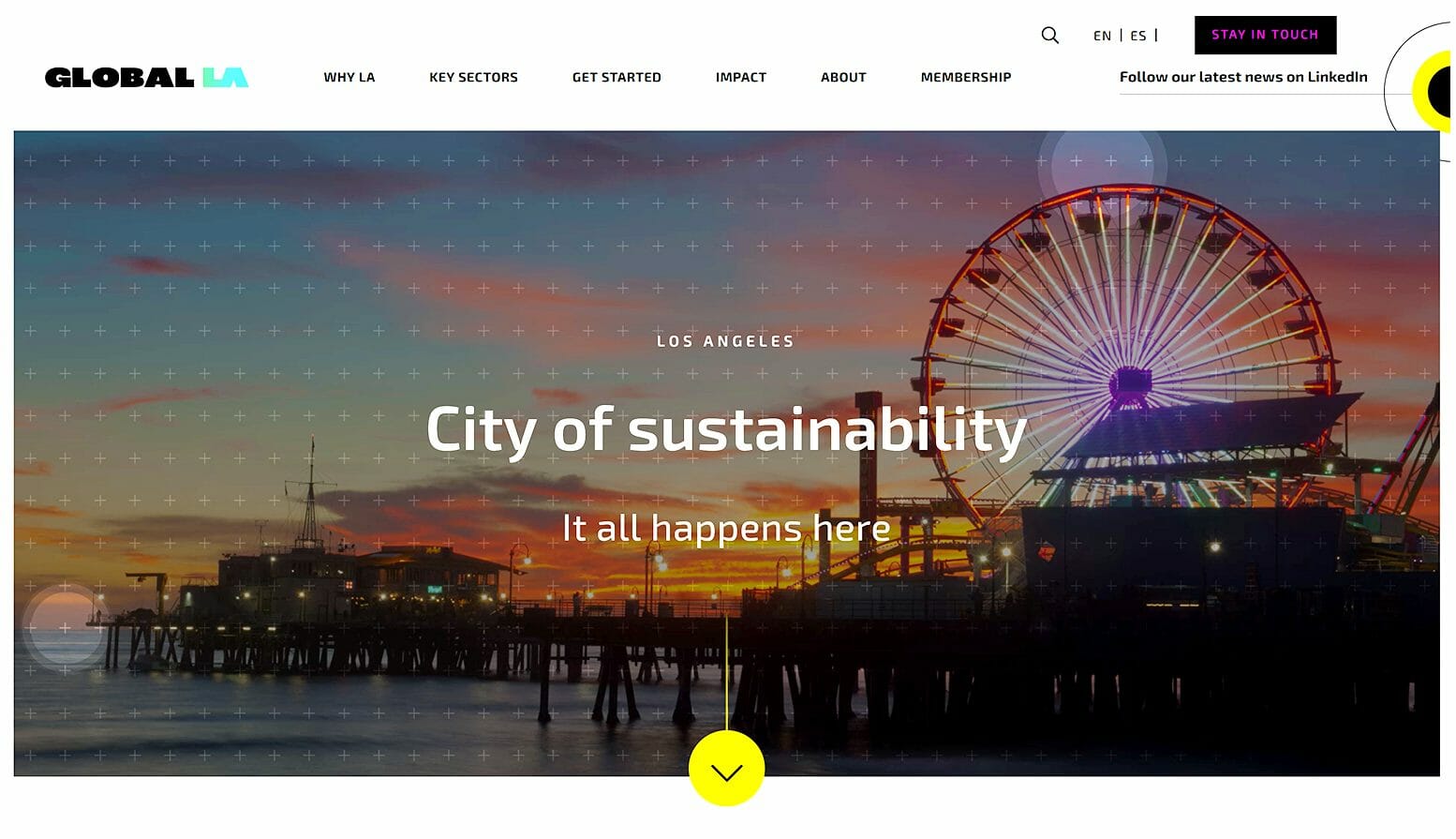22 Oct ‘19
9 Reasons Why a Good Creative Brief is Vital for a Successful Project
22 Oct ‘19
In: Branding & Visual Design, / By: Ripe Media
Whether you are launching a website or an app, promoting a new product or refreshing a brand, you need to have a creative brief for your project. This initial work may require a huge effort on the front end of a project, but it sets the foundation for a consistent and efficient process from beginning to end.
Here we share nine reasons, based on our experience, why both you and your clients will benefit from a good creative brief to guide your projects.
Key Takeaways
- A creative brief helps creative teams stay focused, aligned, and inspired—while giving clients confidence that their vision is understood and respected.
- Defines the brand – Ensures all creative elements align with the brand’s mission.
- Clarifies the audience – Pinpoints who you’re targeting and how to reach them.
- Sets the strategy – Establishes messaging, design, and tone for consistency.
- Creates team alignment – Keeps everyone on the same page, from designers to copywriters.
- Prevents costly revisions – Identifies issues early, saving time and budget.
- Provides a roadmap – Outlines goals, deliverables, and measurable success metrics.
- Builds client trust – Demonstrates a thoughtful, structured approach to the project.
1. Define Your Brand
By taking the time to create a brief on your project, you will be required to express a clear definition of the brand. Whether it is a new brand or one you are revamping, the creative brief is the perfect opportunity to define the brand and how the project will perpetuate and strengthen it.
Every aspect of the campaign must fit the brand’s mission, and by laying out each step, you will be forced to assess how every step will reaffirm that mission.
The colors, graphics, messaging and tactics must all follow the same marching orders. If you cannot clearly articulate how each tactic underscores the overall objective, now is the time to alter or change the tactic so that it does fit in.
It is much less expensive to change these concepts on paper than after they have been created.
2. Identify Your Audience
Your creative brief must also clearly identify who you want to reach and what that audience is looking for. Many firms do a great deal of research, from focus groups to data analysis, to find out what a particular demographic group responds to.
For example, if you are seeking a tween audience, you want to know what your ideal customer is watching, listening to, and wearing. If you are thinking about a spokesperson, you need to know to whom they may appeal.
Language and references, modes of communication like TikTok, and budgets are all key factors to outline in the creative brief so that you can explain to your client who your campaign is reaching and how.
3. Make Sure Everyone’s On The Same Page
A creative brief is also critical if you have a large, multi-faceted team working on different aspects of the campaign. You need to make sure that they are all on the same page- literally.
If you have different people coding the website and designing outdoor and print collateral, they must all be using the same colors, font, characters, perspectives and messaging. The creative brief must be their Bible!
4. A Clear Vision
Often a brand statement can be summarized in a succinct description of only a sentence or two. However, we’ve seen that sometimes when that brand is translated across mediums, it can lose clarity.
Spend your time at the beginning of a project setting down a firm foundation for the campaign’s vision. It’s very easy-especially where there is a lot of passion and creativity- to branch off into tangents that do not hew closely to the original vision. By hashing these issues out now, you save you and your client a lot of time, money, and effort in the future.
Tell a clear story with a beginning, middle, and end. All components to your project must participate in telling that story.
5. Anticipate Issues
Another benefit of laying out a creative brief is that it enables you to see inconsistencies and anticipate problems. You can also better allocate staffing and resources when you lay out the brief.
For example, we had a case where we wanted to include video in a digital campaign but the video was slowing down the experience so we had to pivot. You may have to make adjustments to keep the user experience high quality. It is far easier to revise and scale down in the planning stage, than later when everything has been built.
6. Messaging
Messaging must be consistent across all platforms to resonant with your target audience. A creative brief can provide the basic script that can be used by everyone involved in all aspects of the campaign.
Messaging must communicate what you offer and what you want your audience to do. You need a call to action on every platform: click here! Purchase now!
You may have a more detailed style guide for messaging. Perhaps you always refer to members of the Board of Directors by their first name, or you draft all copy in the second person. These stylistic choices are dictated by the brand, whether it be casual, business-like, or edgy.
7. Look & Feel
Your graphic designers or branding experts will help you create a branding guide that can ensure the consistency of a site across all platforms. You will want your colors to be in synch and to use similar proportions for logos and layouts.
The creative brief is a great place to include instructions of Pantone colors, fonts, and other elements of the brand’s “look and feel.” If there is turnover in staff, the creative brief is where newcomers can go to get exact directions on maintaining the site and all of the other materials.
8. Save Money
In our experience, a creative brief can serve as a practice run that illustrates your vision to the client. Importantly, it can also be tweaked.
Say your client prefers a different color scheme or wants their tagline to emphasize a different subject. Your team can play with all of these elements before implementing any of the ideas, saving on budget and ensuring you and your client are absolutely on the same wavelength.
The actual process of refining the creative brief also brings you and your client closer together. You can learn better their likes and dislikes, what persuades them and what they actively dislike.
9. Articulate Metrics
The creative brief also lays out explicit metrics that can help you demonstrate your success. If your objective is to drive eyeballs to the client’s site, determine how many you want to attain over the first month, the first quarter and the first year.
We find that the analytics give us evidence that we’re on the right track, or if the campaign needs tweaking. Predetermined metrics give you a way to quantify your results so your client can literally see what he is paying for.
Creative Brief Formats
The format of your creative brief can significantly impact how well your message is received and implemented by your team. While there’s no one-size-fits-all approach, several formats have proven effective across different industries and project types.
Document-Based Briefs
The traditional document-based brief remains popular for its comprehensiveness and ability to provide detailed context. Most effective document briefs begin with basic project information like project name, manager, stakeholders, team members, and client information, followed by a concise project summary that outlines the problem your project will solve. (Slite) This format works particularly well for complex projects requiring extensive background information.
Visual Briefs
For design-heavy projects, visual briefs that incorporate mood boards, color palettes, and reference images can communicate creative direction more effectively than words alone. Tools like ClickUp offer whiteboard templates that take traditional briefs further by applying pre-built project tasks and brainstorming diagrams, allowing teams to explore goals, audience demographics, and potential workflows visually. (ClickUp)
Template-Based Briefs
Using standardized templates ensures consistency across projects while saving valuable time. Most effective template-based briefs include sections for project overview, background context, target audience, key challenges, competitors, and strategy with deliverables and scope. (HubSpot) Templates can be customized for specific purposes like advertising, graphic design, or content creation.
Interactive Briefs
Modern digital tools have enabled interactive briefs that facilitate real-time collaboration. These formats typically include clear project names that stakeholders can easily identify, defined metrics of success, target audience information, and tone guidelines that specify how you want your audience to feel when they encounter your creative assets. (Asana)
Industry-Specific Formats
Different creative disciplines often require specialized brief formats:
- Advertising Briefs: Focus on campaign goals, target audience, and key messages
- Design Briefs: Emphasize visual elements, style guidelines, and technical specifications
- Content Briefs: Detail research requirements, outlines, and SEO considerations
- Video Production Briefs: Include storyboards, shot lists, and technical requirements
External Resources for Creative Brief Templates
For ready-to-use creative brief templates, consider these resources:
- Milanote’s Collection of Creative Brief Templates – Offers templates for various creative disciplines including design, marketing, and video production
- Smartsheet’s Free Creative Brief Templates – Provides downloadable templates for advertising, graphic design, and nonprofit projects
- HubSpot’s Customizable Creative Brief Templates – Features three adaptable templates designed for different campaign needs
- Asana’s Creative Brief Templates – Includes examples and templates with project management integration
- Canva’s Creative Brief Templates – Offers visually appealing templates with graphic design elements
Selecting the right creative brief format depends on your project’s complexity, timeline, and the specific needs of your creative team. Whatever format you choose, ensure it captures the essential information while remaining concise enough to inspire rather than restrict creativity.
A Creative Brief: Saves Heartache, Time and Money
By drawing up a creative brief to outline your project’s vision, audience, timeline, and measurables, you give you and your team a roadmap to success. It also serves to show your client you are both working towards the same outcome and gives you a safety net in case things change course over the life span of the project.
For more on the latest trends and techniques in digital marketing, check out our blog.
What is a creative brief?
A creative brief is a document that outlines the vision, goals, and key details of a project to ensure alignment across teams and stakeholders. It serves as a roadmap for creative work.
Why is a creative brief important?
A creative brief keeps teams focused, prevents miscommunication, and ensures that messaging, design, and strategy align with the brand’s goals. It also saves time and money by reducing revisions.
Who uses a creative brief?
Marketing teams, designers, copywriters, and project managers rely on creative briefs to maintain consistency and streamline workflows. At RIPE, we love to use them to make sure our clients’ vision is accurately executed.
What should a creative brief include?
A strong creative brief includes the brand’s mission, target audience, messaging, visual guidelines, objectives, success metrics, and any key deliverables.
How does a creative brief help with branding?
It defines the brand’s identity, ensures consistency across all marketing channels, and keeps creative efforts aligned with the company’s mission and values.
How long should a creative brief be?
The length varies based on the project, but a concise one- to two-page document is often enough to capture essential details without overwhelming the team.
Can a creative brief help with campaign performance?
Yes! By setting clear goals and metrics, a creative brief makes it easier to track success and optimize the campaign for better results.
How often should a creative brief be updated?
A creative brief should be reviewed and adjusted whenever a project’s scope, audience, or objectives change to ensure continued alignment.
















